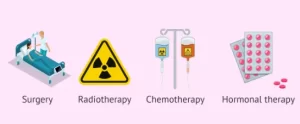Nasal Reconstruction surgery
surgery is a specialized procedure that aims to restore the form and function of the nose, often after trauma, cancer removal, or congenital abnormalities. This intricate surgical technique involves careful reshaping and reconstruction of the nasal construction to improve aesthetic appearance and breathing functionality.
Different Types of Noses
The nose is a prominent facial feature, and its shape can vary significantly from person to person. Here are some common types of noses:
- Roman Nose
- Greek Nose
- Snub Nose
- Hawk Nose
- Button Nose
Tips for a Successful Nasal Reconstruction Surgery
Undergoing nasal reconstruction surgery requires careful planning and consideration. Here are essential tips to ensure a successful outcome:
- Choose an Experienced Surgeon: Select a plastic surgeon who specializes in nasal reconstruction and has extensive experience in the specific procedure you require. Research their qualifications, expertise, and patient reviews to make an informed decision.
- Communicate Clearly: Effective communication with your surgeon is crucial. Clearly express your goals, concerns, and expectations regarding nasal reconstruction’s functional and aesthetic aspects. This will help the surgeon develop a personalized treatment plan tailored to your needs.
Benefits of Nasal Reconstruction Surgery
Nasal reconstruction surgery offers a range of benefits for individuals seeking to restore the form and function of their noses. Here are ten potential benefits:
- Improved Appearance: Nasal reconstruction surgery can enhance the aesthetic appearance of the nose, restoring symmetry and harmony to the face.
- Enhanced Breathing: Nasal reconstruction surgery can significantly improve airflow and enhance overall respiratory function for individuals with breathing difficulties due to structural issues or obstructions.
- Restored Facial Proportions: A well-proportioned nose can contribute to a balanced and attractive facial appearance. Nasal reconstruction surgery can address imbalances and improve overall facial harmony.
- Correction of Birth Defects: Nasal reconstruction surgery can correct congenital nasal deformities, such as cleft lip and palate, providing individuals with a more natural and functional nose.
- Reconstruction after Trauma: In cases of nasal trauma, such as fractures or severe injuries, nasal reconstruction surgery can restore the nose’s shape, function, and aesthetics.
- Restoration after Cancer Removal: Nasal reconstruction surgery plays a crucial role in restoring the nose’s appearance and function after removing cancerous tissues, ensuring a complete recovery.
- Improved Self-Confidence: Nasal reconstruction can boost self-esteem and self-confidence by addressing aesthetic concerns and enabling individuals to feel more comfortable with their appearance.
- Enhanced Sense of Smell: In cases where nasal abnormalities hinder the sense of smell, nasal reconstruction surgery can help restore and improve this essential sensory function.
- Reduced Nasal Obstruction: Nasal reconstruction surgery can alleviate nasal obstruction caused by structural abnormalities, allowing for easier breathing and reduced nasal congestion.
- Long-Term Results: With proper care and follow-up, the results of nasal reconstruction surgery can be long-lasting, providing lasting functional and aesthetic improvements.
With proper care and follow-up, the results of nasal reconstruction surgery can be long-lasting, providing lasting functional and aesthetic improvements.
Side Effects of Nasal Reconstruction Surgery
As with any surgical procedure, nasal reconstruction surgery carries potential side effects and risks. These can include:
- Swelling and Bruising: Temporary swelling and bruising around the nose and eye area are joint after nasal reconstruction surgery. These effects typically subside within a few weeks.
- Pain and Discomfort: Some degree of pain and discomfort can be expected after the procedure, but this can be managed with prescribed pain medications.
- Nasal Congestion: Nasal congestion and difficulty breathing through the nose may be experienced during the initial healing phase. This usually improves as the healing progresses.
- Scarring: Nasal reconstruction surgery involves incisions, which can result in visible scars. However, skilled surgeons strive to minimize scarring and ensure they are well-hidden or inconspicuous.
- Infection: Although rare, there is a risk of infection following nasal reconstruction surgery. Your surgeon will guide you on preventing infection and may prescribe antibiotics if necessary.
- Numbness or Altered Sensation: Temporary numbness or altered sensation in and around the nose is common after surgery but usually resolves over time.
- The Revision or Touch-Up Procedures: Achieving the desired outcome may require revision or touch-up procedures to address any remaining aesthetic or functional concerns.
It is important to discuss potential side effects and risks with your surgeon before undergoing nasal reconstruction surgery to make an informed decision.

Eligibility for Nasal Reconstruction Surgery
Nasal reconstruction surgery may be suitable for individuals who have the following:
- Structural abnormalities affecting nasal function or appearance
- Experienced nasal trauma or injury
- Undergone nasal cancer removal or reconstruction
- Congenital nasal deformities or birth defects
Open or Closed Surgery for Nasal Reconstruction?
The decision between open or closed surgery for nasal reconstruction depends on various factors, including the complexity of the reconstruction and the desired outcome. Open surgery involves an external incision, providing better visibility and access for complex reconstructions.
Closed surgery involves incisions inside the nose, resulting in no visible external scars. Your surgeon will assess your case and recommend the most appropriate surgical approach for nasal reconstruction.
It might be several months before you see the full effect of the operation, and up to 6 months for the swelling to completely go. NHS
Step-by-Step Guide for Nasal Reconstruction Surgery
While each nasal reconstruction surgery is unique and tailored to the individual’s needs, here is a general step-by-step guide to the procedure:
- Consultation and Evaluation: Meet with a skilled plastic surgeon specializing in nasal reconstruction to comprehensively evaluate your nasal concerns and discuss your goals and expectations.
- Treatment Planning: Your surgeon will develop a personalized treatment plan based on your specific needs, considering factors such as functional improvement, aesthetic goals, and the extent of reconstruction required.
- Anesthesia Administration: Before the surgery, anesthesia will be administered to ensure your comfort and safety throughout the procedure. This may involve general anesthesia or local anesthesia with sedation.
- Incision Placement: Depending on the surgical approach chosen (open or closed), the appropriate incisions will be made either externally or internally within the nose.
- Tissue Reconstruction: The surgeon will carefully reshape and reconstruct the nasal structures, using various techniques such as cartilage grafting, tissue flaps, or synthetic implants, to achieve the desired shape and function.
- Closure and Dressing: Once the necessary modifications are complete, the incisions will be meticulously closed using sutures, and a dressing or splint may be applied to protect the nose during the initial healing phase.
- Postoperative Care and Follow-Up: After the surgery, you will receive detailed postoperative care instructions, including wound care, medication management, and follow-up appointments to monitor your healing progress and address any concerns.
Fun fact: Did you know? While many might be familiar with rhinoplasty and septoplasty, which are direct methods of nasal reconstruction surgery, there’s a broader world of facial plastic surgery out there! Nasal trauma, for instance, might not always need a full-on rhinoplasty.
Sometimes, simple cosmetic surgery techniques can do the trick. And for those looking beyond just function, nose reshaping offers a way to enhance one’s aesthetic appearance. It’s fascinating how all these procedures interlink in the realm of facial aesthetics!
summary:
Nasal reconstruction surgery is a remarkable procedure that can restore both the form and function of the nose, providing individuals with improved aesthetics and enhanced breathing abilities. Whether for trauma recovery, cancer reconstruction, or congenital deformities, this procedure offers numerous benefits, including improved appearance, restored facial proportions, and enhanced self-confidence.
FAQs:
- Who is eligible for nasal reconstruction surgery? Eligibility depends on individual circumstances. Consult a surgeon for suitability.
- How long is the recovery period? Recovery time varies, typically several weeks to months.




